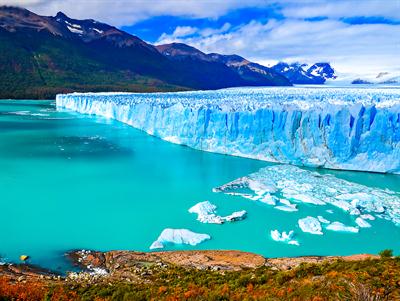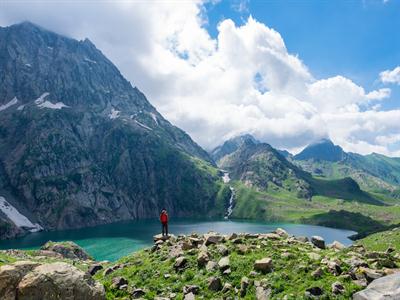PDF chapter test TRY NOW
Keep an ice cube on a plate and tilt it slightly. Can you see the ice cube moving towards the slope? Similarly, huge masses of ice we see on the mountains and in some continent also moves over the land. This huge mass of ice is called a glacier.
Glacier: A huge mass of ice moving slowly over the land due to gravity is called a glacier.

The two main types of glaciers are:
- Mountain or Valley Glaciers and
- Continental Glaciers
Continental glaciers are continuous masses of moving ice. Ice fields are small continental glaciers. Ice sheets are big continental glaciers.
Example:
Greenland and Antarctica are almost completely covered with ice sheets up to 3500 m (11,500\ ft) thick.
A Mountain glacier is also known as a valley or alpine glacier. It flows for almost all of its length within the walls of a mountain valley. Usually, they follow the former river courses.
Example:
The Himalayas and the Alps
As the glacier moves, it erodes both laterally and vertically, levelling soil and stones to expose the solid rocks below.
Cirque: It is a bowl-shaped depression created by glacial erosion. It has a steep sidewall and headwall surrounding an armchair shaped depression.
Cirque: It is a bowl-shaped depression created by glacial erosion. It has a steep sidewall and headwall surrounding an armchair shaped depression.
Example:
Corrie – Scotland (United Kingdom), Kar – Germany.
Tarn lake: A lake that develops in the basin of a cirque, generally after the melting of the glacier

Tarn lake
Arete: An arête is a thin crest of rock left after two adjacent glaciers have worn a steep ridge into the rock.
U-Shaped Valley: A valley formed by glacial erosion with "U" shaped cross-section, steep walls and generally a broad and flat floor. A U-shaped valley is formed when a glacier widens and over-steepens a V-shaped stream valley.
Moraine: Unstratified and unsorted deposits of sediment that form through glacial erosion
